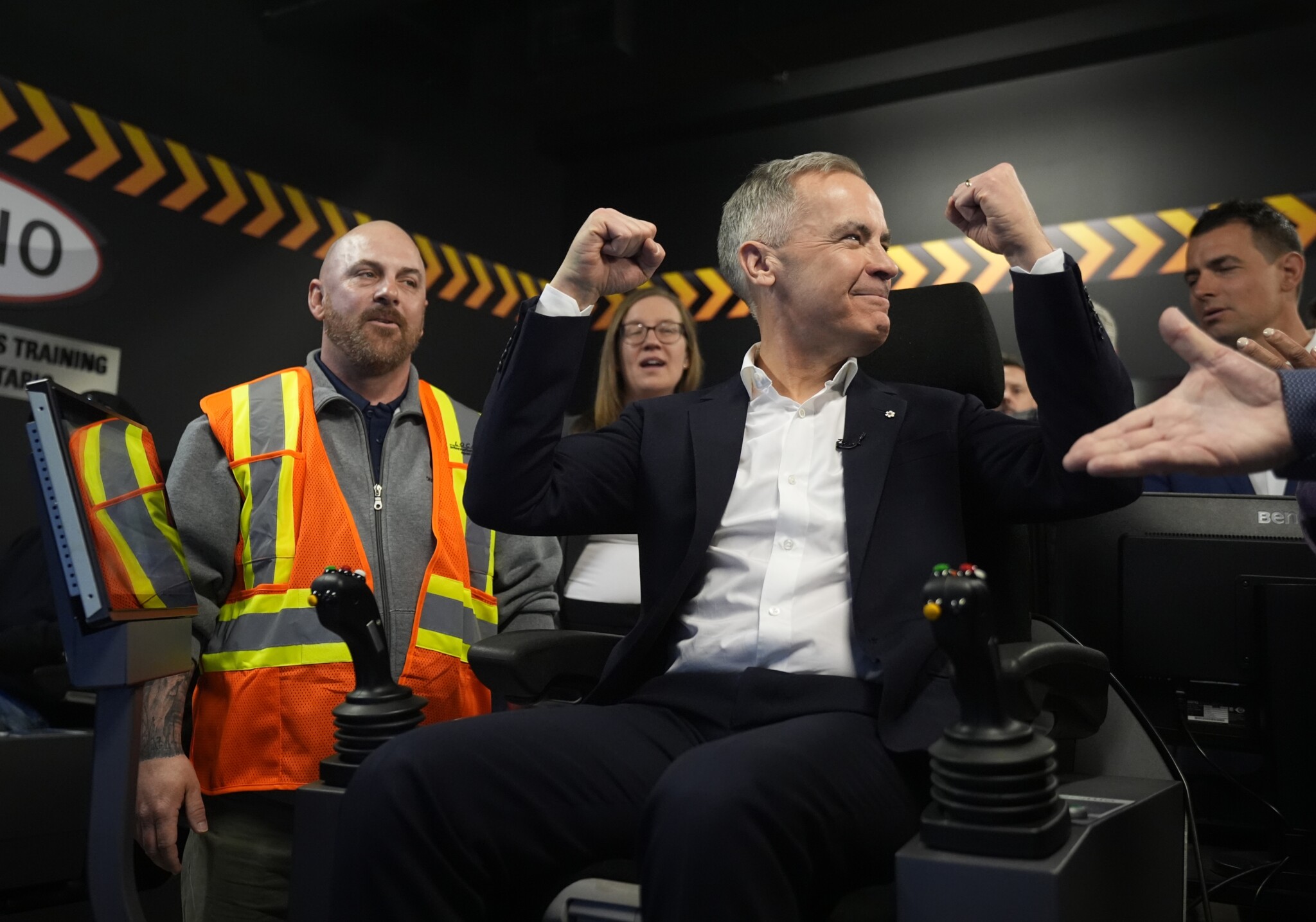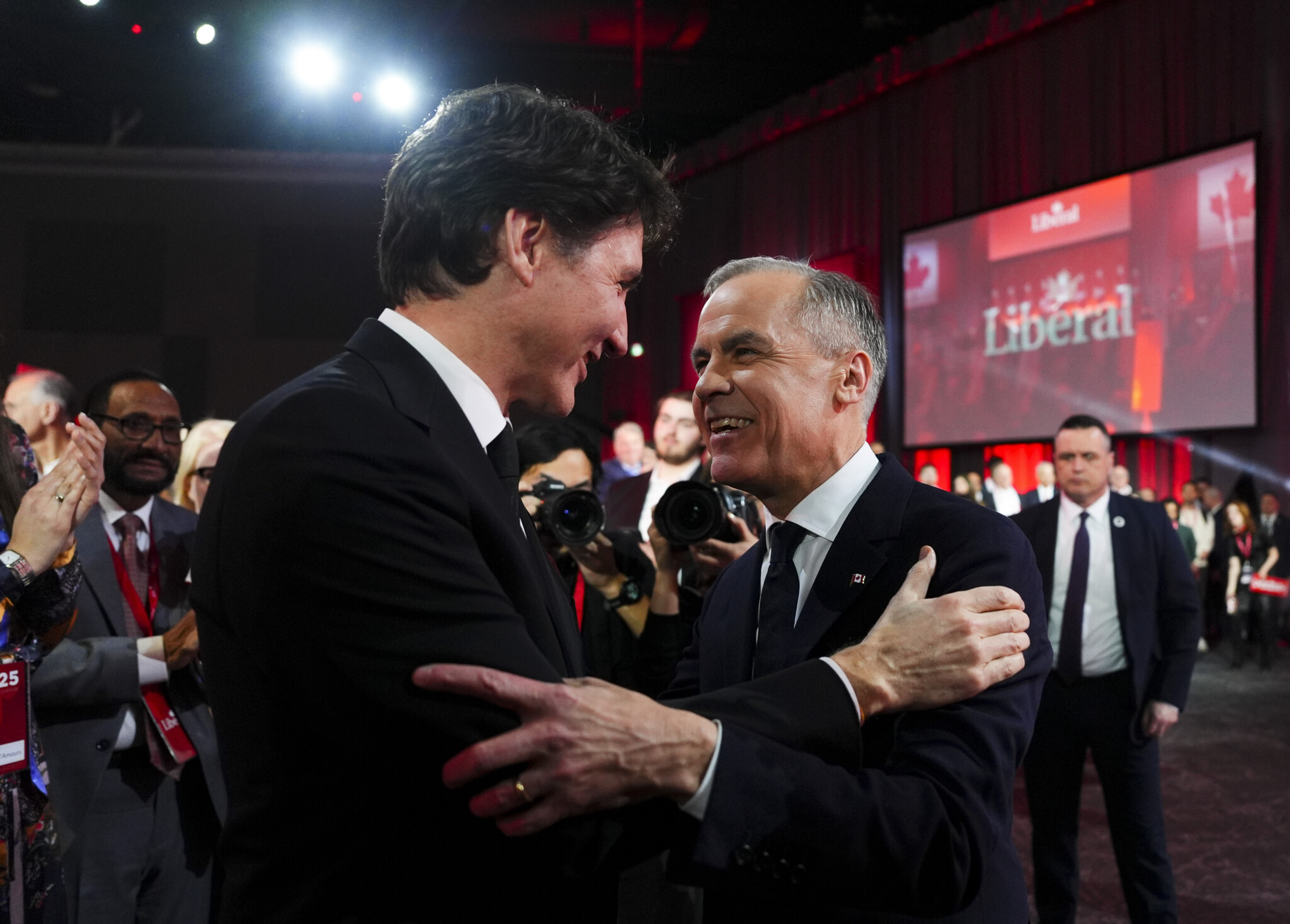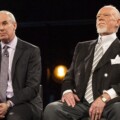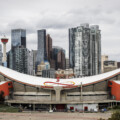Welcome to Need to Know, The Hub’s roundup of experts and insiders providing insights into the federal election stories, policy announcements, and campaign developments Canadians need to be keeping an eye on.
Meet the new Liberal leader, same as the old Liberal leader
By Sean Speer, The Hub’s editor-at-large
By coincidence, Wednesday’s French-language debate was held on the same day as the three-month anniversary of Mark Carney’s leadership launch and his official foray into elected politics. His political recency is sometimes characterized as a weakness. But it’s clear from the debate that Carney and his campaign team view it as an essential strength.
One could see it in his responses to criticisms from Pierre Poilievre and Yves-François Blanchet about the 10-year Liberal record. Both aimed to make the case that not only should Carney and the Liberals be held accountable for their litany of failures over the past decade, but that re-electing them would amount to doubling down on the wrong-headed ideas that caused the failures in the first place.
Carney’s response was that he was new and different. He may belong to the same party as Justin Trudeau, but he bears no responsibility for his predecessor’s poor record or its underlying ideas. As Carney frequently put it: “I just arrived” or “I just got here.”
There are a few problems with this line of argument. First, he prominently served as an economic advisor to the Trudeau government. Second, most of his cabinet and a significant share of his candidates were part of the Trudeau government. And third—and perhaps most notably—it’s far from obvious how a Carney government would differ from a Trudeau government.
Yes, Carney has repealed the consumer carbon tax (though his essential argument is that it’s “divisive” rather than that he disagrees with it) and the last budget’s capital gains tax hike. It’s also fair to say that he seems less motivated by Trudeau’s excessive identity politics.
Yet otherwise, the presumption that Carney is more centrist than Trudeau is as much about aesthetics as it is substance. One may be a banker and the other a drama teacher, but their core assumptions about politics are strikingly similar.
Carney’s recent reversal of his early support for new pipeline construction is a good example. There’s a strong case in fact that based on his track record, Carney is actually worse than Trudeau on pipelines. If Carney had been prime minister, for instance, the Trans Mountain project probably wouldn’t have happened.
Another similarity is their equivocal support for Israel. Carney has regrettably adopted Trudeau’s moral obtuseness and both-sidesism on the ongoing conflict with Hamas. One is left to speculate whether it’s motivated by politics or principle.
The list invariably goes on. At this point, notwithstanding the stylistic differences, it’s hard to think of many policy areas where a Carney-led government will fundamentally differ from its predecessor.
The upshot: while the Carney’s working assumption that he can effectively distance himself from Trudeau’s ideas and record may prove to be good politics, the notion that this is somehow a different party—or even that he’s a substantially different leader—than the one that governed Canada for the past decade is more about vibes than it’s about facts.
Carney gets a little help from his friends
By Royce Koop, professor of political science at the University of Manitoba
This election campaign is a battle of narratives. On one hand, fear of Donald Trump, tariffs, and the threat of U.S. annexation clearly benefits Mark Carney. On the other hand, concern about the economy, cost of living, and inflation helps Pierre Poilievre.
We know Canadians are, in fact, more concerned about economic issues than they are about Trump, which helps Poilievre. But politicians, of course, don’t just passively accept public opinion that disadvantages them; rather, they actively try to prime the importance of issues that will benefit them. As the threat of Trump has receded from view, the Conservatives have seen an uptick in support as Canadians have refocused on pressing economic issues.
Carney’s response has been to try to boost the salience of Trump with some truly outlandish campaign rhetoric. This past week, Carney, the putative “adult in the room,” told an audience of supporters that “They [the Americans] want to break us. They want to break us so they can own us. They want our resources. They want our water. They want our land. They want our country.”
And, sometimes, politicians get a little help from their friends. This week, CBC journo Katie Simpson joined the White House press gaggle to ask whether Trump’s relative silence on Canada in recent days meant that his views had shifted. Predictably, Trump’s spokeswoman was quick to deny that. “The president still maintains his position on Canada,” she asserted. “He believes that Canadians would benefit greatly from becoming the 51st state.”
Like clockwork, that statement headlined the major newscasts that evening. In helping to prime an issue that favoured the Liberals, Simpson had primed a massive gift to Carney. Columnist and former Liberal strategist Warren Kinsella didn’t mince his words in response to the news:
“And, with that, I do believe the Trump regime just guaranteed the election of [Carney].”
This was a classic example of journalists creating news rather than reporting on it. There was no new announcement to report on. Nothing had happened. If Simpson had not asked her question, there would have been no statement. But in doing so, Simpson injected a dynamic into the campaign that favoured one party over another. Conservatives were—rightly in my view—steamed about what they saw as an example of CBC bias
This occurred just shortly before the leaders’ debates and will surely provide an advantage to Carney over Poilievre. There were good reasons to suspect that Poilievre (contrary to most expert opinion) was, in fact, at a disadvantage to Carney going into the debates. Simpson’s intervention in the campaign tilts the scale even further in Carney’s favour.
That’s something to keep in mind while watching the English language debate tonight and when assessing Carney and Poilievre’s performances.

Liberal leader Mark Carney during a campaign stop at Operating Engineers Local 793 Training Centre in Oakville, Ont. Adrian Wyld/The Canadian Press.
If this is the most consequential election in our lifetime, why is nothing happening?
By Bryan Breguet, an economist at Langara College in Vancouver
Campaigns matter—until they don’t? We are more than halfway through this general election and nothing has happened. At least according to the polls. The Liberals are cruising to a majority thanks to being at around 43-44 percent while the Tories are trailing by around 5-6 points. Given the usual vote efficiency advantage of the Liberals, they’d win a pretty comfortable majority if the election were tomorrow.
So, why is it so stable? Are people not paying attention? It seems that people paid attention and changed their minds just before the election. Four months ago, the Conservatives had a commanding lead of around 20-25 points over the Liberals led by Justin Trudeau. The incumbent was on the verge of possibly finishing third in the seat counts while Pierre Poilievre was wondering how he’d handle a caucus of 200-plus MPs. Then Trudeau resigned, the Liberals picked Mark Carney, and Donald Trump decided to attack Canada with tariffs and threats of turning us into the 51st State. It seems those events were enough to cause a massive shift in the voting intentions, especially among NDP voters and people over 55, who rallied behind the Liberals.
Have people really got the (new) information they needed in January-March, and things simply won’t change anymore? It sure seems so. Canadians saw the threat and the new leader and decided that Carney was the right man for the job, and Poilievre hasn’t been able to change their mind in the first three weeks of this campaign. As a matter of fact, polls show that Carney is getting more popular (net +13 over the last months according to Abacus) and is gaining on the question “who is best equipped to handle the U.S. and Trump” (46 percent to 31 percent in the latest poll from Innovative Research).
The debates are really Poilievre’s last chance to try to change this.
Social ad spending down for both Liberals and Conservatives this week, but Liberals maintain an advantage
By Cole Hogan, a conservative strategist
From April 6 to April 12, the third week of the campaign, Pierre Poilievre’s Conservatives spent $458,000 on Meta platforms. This represents a decrease of $107,000 from the previous week’s $565,000 spend. The Conservative spend of $698,000 during the first week of the campaign is the largest dollar amount dedicated to Meta ad spending during the election so far.
Mark Carney’s Liberals spent $513,000 on Meta platforms from April 6 to April 12, outpacing the Conservative ad spend of $458,000. The $513,000 spend by the Liberals represents a decrease of $184,000 from their ad spend the week prior, March 30-April 5, where Liberals spent $697,000. This is a significant decrease in the weekly Liberal spend, but given the decrease of $107,000 on the Conservative side, the Liberals maintain an advantage of $55,000 in ad spend.
In the first two weeks of the election, Liberals spent between $682,000 and $697,000. The Conservatives spent between $698,000 and $565,000. Last week, April 6 to April 12, the Liberal spend dropped to $513,000 and the Conservative spend dropped to $458,000, representing the lowest amount spent in the election by each party so far.
The most viewed Conservative advertisement is currently a still image ad featuring Ana and Pierre Poilievre at a rally with text that reads, “Do you support Pierre for Prime Minister? Let us know.” The most viewed Liberal advertisement is currently a 30-second video ad featuring clips of Mark Carney during his time as governor of the Bank of Canada with a voiceover from Carney that says, “I know how to manage a crisis.” The ad then switches to a clip of Jim Flaherty saying, “Governor Carney has been an invaluable support.” The ad continues with modern footage of Carney, where he goes on to state, “You have to focus on what you can control. We can’t control President Trump, but we can help you weather the storm. That starts with you keeping more of your paycheque. I will immediately cut taxes for the middle class so it’s easier to pay your bills. We won’t let President Trump knock us around. We will build a Canada you can afford. Because when you’re better off, your country is better off”.
Jagmeet Singh’s NDP weekly ad spend increased from $8,000 to $23,000. This represents the largest amount the NDP has spent so far during this election, but pales in comparison to the amounts spent by the Liberals and Conservatives. The NDP’s advertising is primarily focused on advertising local candidates in ridings in British Columbia, Nunavut, the Northwest Territories, Nova Scotia, and Quebec. There are only two ads that feature Jagmeet Singh, running exclusively in British Columbia.
Why are so many Canadian elites sympathetic to authoritarians?
By Mathew Giagnorio, writer, journalist, and founder of A Further Inquiry on Substack
There was a time when liberal democracy was more than a talking point. It was a conviction. Today, among Canada’s political, academic, and cultural elite, that conviction is rapidly vanishing—and in its place is a disturbing sympathy for authoritarians, so long as they cloak themselves in the rhetoric of “resistance.”
We saw it on university campuses after October 7, when mass murder was rebranded as liberation. We see it in government-funded NGOs that equivocate on basic rights, in academics defending regimes like Iran’s, and in MPs who can’t call Hamas terrorists without political footnotes. Why?
Partly, it’s moral confusion. But it’s also ideological rot. For decades, Canada’s intellectual class has embraced postmodern frameworks that view power—not freedom—as the primary lens through which to interpret the world. That lens turns Israel into a colonizer, the Uyghurs into an inconvenient afterthought, and liberal democracies into the real villains.
This isn’t compassion. It’s complicity. And it’s accelerating.
When a society’s elites excuse authoritarianism abroad, they chip away at liberalism at home. The more they rationalize violence in the name of “resistance,” the more they lay the groundwork for its domestic imitation.
Canadians should ask: what happens when this logic turns inward? What becomes of our civic life when the values that underpinned it—pluralism, individual liberty, and democratic accountability—are dismissed as tools of oppression?
The answer isn’t academic. It’s cultural suicide, and the decay is already visible. The defence of liberal democracy shouldn’t be a partisan cause. It should be a national reflex. If our institutions have forgotten that, then it’s time Canadians reminded them.









